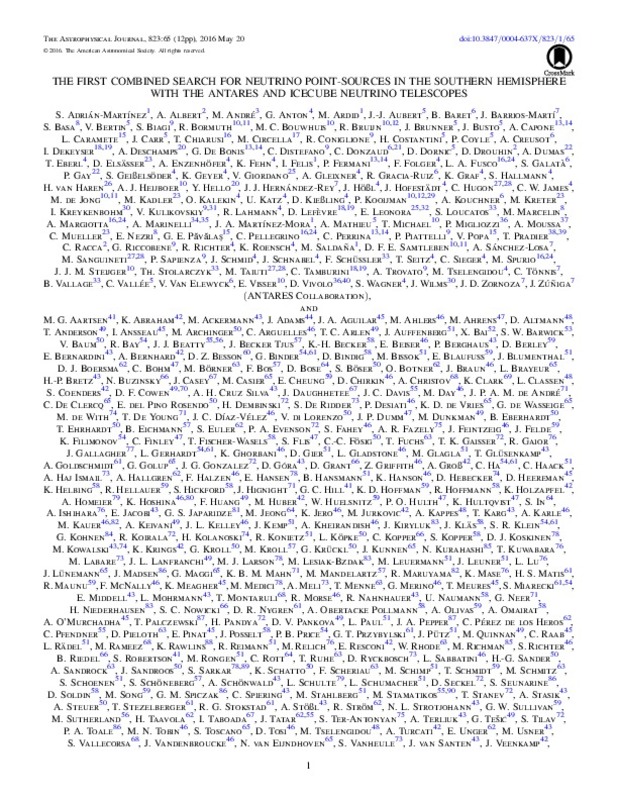JavaScript is disabled for your browser. Some features of this site may not work without it.
Buscar en RiuNet
Listar
Mi cuenta
Estadísticas
Ayuda RiuNet
Admin. UPV
The first combined search for neutrino point-sources in the Southern Hemisphere with the ANTARES and IceCube neutrino telescopes
Mostrar el registro completo del ítem
Adrián Martínez, S.; Albert, A.; André, M.; Anton, G.; Ardid Ramírez, M.; Aubert, J-.; Baret, B.... (2016). The first combined search for neutrino point-sources in the Southern Hemisphere with the ANTARES and IceCube neutrino telescopes. Astrophysical Journal. 823:1-12. https://doi.org/10.3847/0004-637X/823/1/65
Por favor, use este identificador para citar o enlazar este ítem: http://hdl.handle.net/10251/80045
Ficheros en el ítem
Metadatos del ítem
| Título: | The first combined search for neutrino point-sources in the Southern Hemisphere with the ANTARES and IceCube neutrino telescopes | |
| Autor: | Adrián Martínez, Silvia Albert, A. André, M. Anton, G. Aubert, J. -J. Baret, B. Barrios Martí, J. Basa, S. Bertin, V. Biagi, S. Bormuth, R. Felis-Enguix, Iván Saldaña-Coscollar, María | |
| Entidad UPV: |
|
|
| Fecha difusión: |
|
|
| Resumen: |
We present the results of searches for point-like sources of neutrinos based on the first combined analysis of data from both the ANTARES and IceCube neutrino telescopes. The combination of both detectors, which differ in ...[+]
|
|
| Palabras clave: |
|
|
| Derechos de uso: | Reserva de todos los derechos | |
| Fuente: |
|
|
| DOI: |
|
|
| Editorial: |
|
|
| Versión del editor: | http://dx.doi.org/10.3847/0004-637X/823/1/65 | |
| Código del Proyecto: |
|
|
| Agradecimientos: |
The authors of the IceCube collaboration acknowledge the support from the following agencies: U.S. National Science Foundation-Office of Polar Programs, U.S. National Science Foundation-Physics Division, University of ...[+]
|
|
| Tipo: |
|









